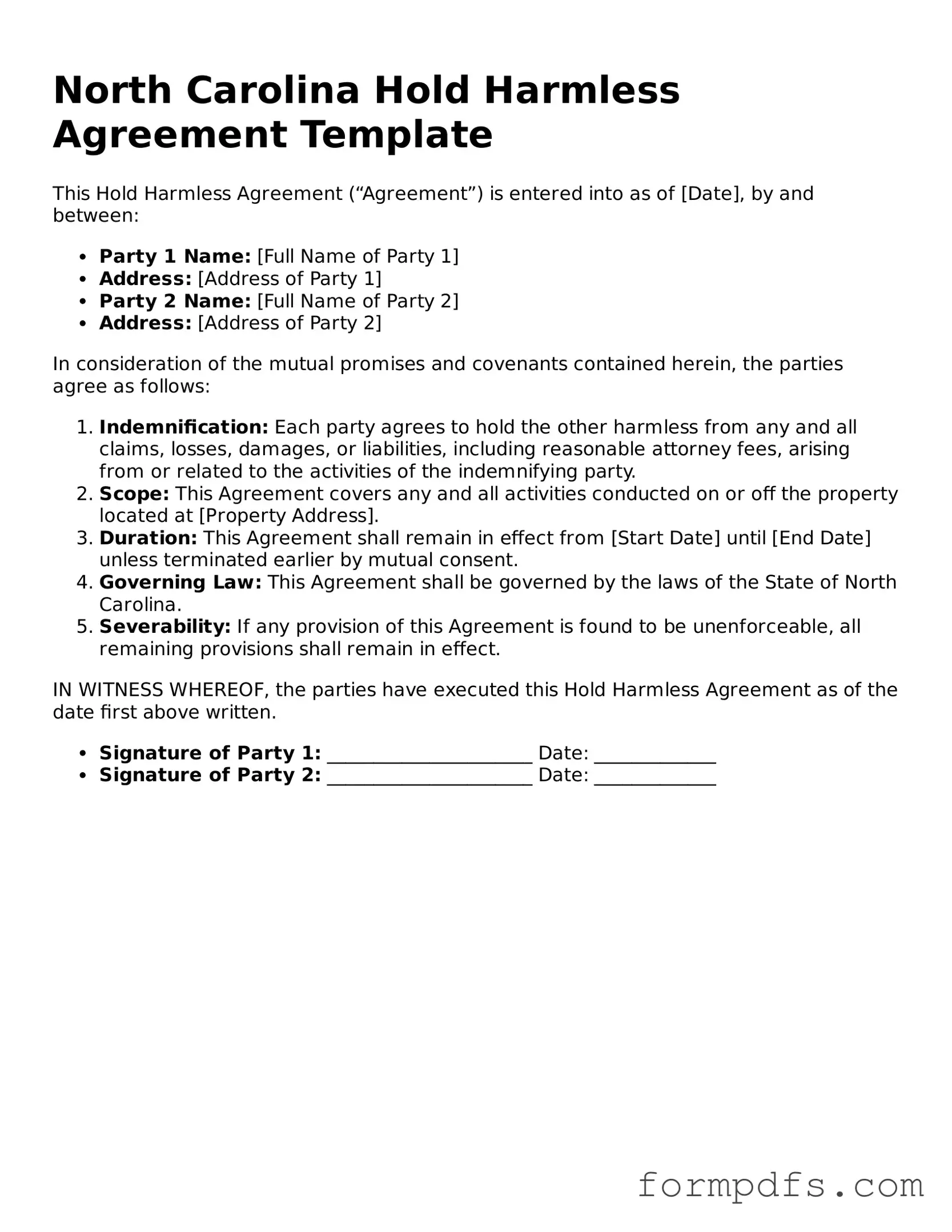What is a Hold Harmless Agreement in North Carolina?
A Hold Harmless Agreement is a legal document that protects one party from liability or claims arising from specific activities or events. In North Carolina, this agreement is often used in various contexts, such as real estate transactions, construction projects, and recreational activities. By signing this document, one party agrees not to hold the other party responsible for any injuries, damages, or losses that may occur during the specified activities.
Who typically uses a Hold Harmless Agreement?
Various individuals and organizations utilize Hold Harmless Agreements. Property owners, contractors, event organizers, and recreational facilities often rely on these agreements to mitigate risks associated with their activities. For example, a contractor might ask a client to sign the agreement before starting a construction project, ensuring that the contractor is not liable for any accidents that occur on the job site.
What should be included in a Hold Harmless Agreement?
A well-drafted Hold Harmless Agreement should clearly outline the parties involved, the specific activities covered, and the extent of the liability being waived. It’s essential to include definitions of key terms and specify any limitations or exclusions. Additionally, the agreement should state the governing law, which in this case would be North Carolina law, and include signature lines for all parties to acknowledge their consent.
Are there any limitations to a Hold Harmless Agreement?
Yes, there are limitations. While a Hold Harmless Agreement can provide significant protection, it cannot shield a party from liability for gross negligence or willful misconduct. Courts may also scrutinize these agreements to ensure they are fair and reasonable. Therefore, it’s crucial to draft the agreement carefully and consider the potential legal implications.
How can I ensure my Hold Harmless Agreement is enforceable?
To enhance the enforceability of a Hold Harmless Agreement, clarity is key. Use straightforward language and avoid ambiguous terms. Ensure that all parties fully understand the agreement before signing. It’s also advisable to consult with a legal professional who can provide guidance tailored to your specific situation and ensure compliance with North Carolina laws.
